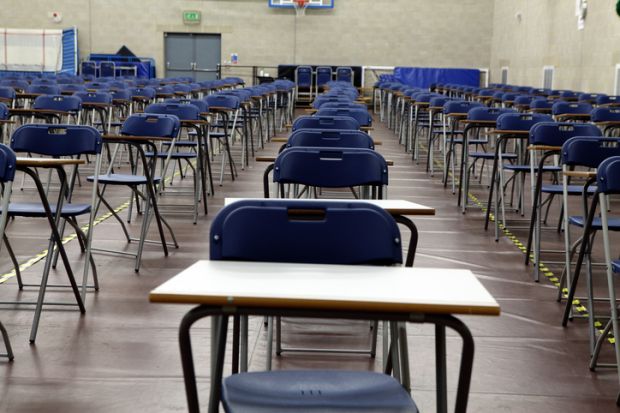Each year, about 10 million students pass the common Year 12 end-of-school examinations in India, the majority seeking admission to higher education. However, since the number of applicants is much higher than the number of places available at quality institutions, various selection methods have emerged.
In particular, hundreds of entrance exams are set by different universities and professional bodies, often wildly different in style and content.
Students must typically navigate the logistics of appearing at one of these for every university they apply to: three to five, on average. They must also meet the expense of doing so. Most applications cost anything from 500 rupees (£5.60) to 3,500 rupees, adding up to a sum higher than many Indian workers’ monthly earnings. The actual cost to the nation is much higher still, as all students have to travel to examination centres in India’s main cities, often accompanied by a parent or relative.
Part of the problem is that most of India’s academic institutions are autonomous and, therefore, free to administer whatever examinations they wish. They have total control over their format – written answers or multiple choice, online or offline – as well as their content, fees, location and timetable. Moreover, for some reason, Indian educational institutions do not consider the administration of entrance examinations to be part of their duties towards would-be students. Hence, every teacher, examiner, paper setter, evaluator and support worker is paid an honorarium, on top of their standard salaries, for their work related to entrance examinations. It is also not uncommon for universities to derive some revenue from what remains of the fee after everyone has been paid.
In this scenario, it is futile to think that any educational institution, whether government or private, would choose to end the practice of setting entrance exams and charging application fees in favour of a more cost-effective and student-friendly way to select students. This situation, coupled with the lack of any government policy or regulation of university admissions, inflicts severe financial hardship on students and parents and distracts academics from the actual business of teaching students.
Before the rigmarole of applications and examinations begins again next summer, there is an urgent need for national reforms to curb this entrance examination industry to allow students to apply to a maximum number of institutions with a minimum amount of fuss.
So far, only engineering, legal and medical institutions have developed any sort of umbrella entrance examination and common admissions process. For example, the National Testing Agency conducts the Joint Entrance Examination, which enables admission to any one of 110 prestigious institutes of technology or information technology. Similarly, a Supreme Court intervention has helped to streamline medical entrance examinations into a single “National Eligibility Cum Entrance Test” (NEET) examination. And the Common Law Admission Test (CLAT) is a centralised test for admission to 21 National Law Universities and 43 other education institutes.
This is a good start but it is not enough. Similar institutions should all have a single common entrance examination. For example, all central universities should join the common system already operated by 14 newer central universities.
Second, state universities should either conduct a single entrance exam at state level or simply admit through one of the umbrella examinations conducted by central universities.
It is noteworthy, for instance, that many state governments in India have abolished specific entrance tests for admission to engineering colleges. Instead, students apply for admission via a common portal with scores obtained in any pan-India entrance test. Similar systems can be developed for admission into arts, science and commerce streams as well.
Finally, about 80 per cent of students in Indian higher education study at about 40,000 colleges affiliated to 285 universities, according to the University Grants Commission. There is no homogeneous policy on admissions, and often students have to apply to each college individually. If each of the affiliating universities took responsibility for their constituent colleges through a common admissions process, parents and students could save time and money that could be invested more fruitfully into education itself.
Sanjay Mishra is an adviser at the Department of Science and Technology within India’s government. He writes in a personal capacity.
后记
Print headline: Time for a simple plan




